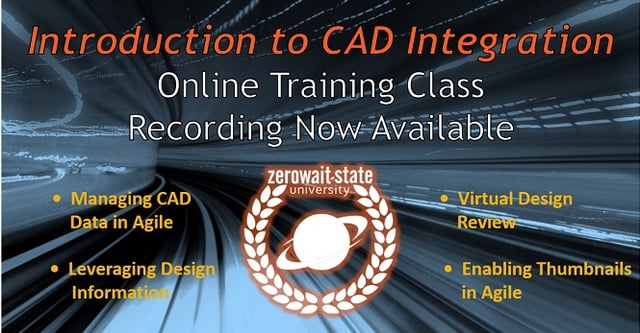 I attended the University of Texas and one of our pastimes is to tell jokes about one of our rival schools Texas A&M. They are known as "Aggie" jokes. A&M is an excellent university and they are particularly strong in Engineering disciplines but the jokes are always at their expense. I am not above just telling Aggie jokes for fun but this one is actually relevant. Two Aggies were flying a small plane and determined they were running low on fuel and needed to land immediately. They were in the Houston, Texas area so they radioed the tower of one of the large airports in Houston to request clearance to land. The controller immediately cleared them for a runway. The Aggie pilot made an approach and after seeing the runway requested a larger runway. The controller was confused and replied that they were able to land large jets on this runway and that it was the best they could do. The Aggie responded that considering their fuel situation they would have no choice but to attempt to land on the runway. As the plane attempted to land it indeed ran off the end of the runway. Fortunately the plane was intact and both the pilot and his companion were unhurt. The Aggie pilot looked at his friend and said, "See I told you that runway was too short!" his friend replied, "Yeah, but it sure was a wide sucker." Recently, someone pointed out to me a study from Aberdeen Group titled "Product Lifecycle Management Solutions AXIS for Hardgoods Manufacturers". This study is broad in its reach, and as these types of studies go, is well written and researched. However, if you really delve into the content, it, much like our Aggie pilot's runway, lacks depth. As we embark on what I hope is a "deep dive" into PLM and the different philosophies and approaches, I thought it would be worthwhile to look at one of the more ambitious attempts to clarify value and functionality among PLM solutions, and where this study falls short in providing clients with assistance in determining the appropriate PLM solution for their company.
I attended the University of Texas and one of our pastimes is to tell jokes about one of our rival schools Texas A&M. They are known as "Aggie" jokes. A&M is an excellent university and they are particularly strong in Engineering disciplines but the jokes are always at their expense. I am not above just telling Aggie jokes for fun but this one is actually relevant. Two Aggies were flying a small plane and determined they were running low on fuel and needed to land immediately. They were in the Houston, Texas area so they radioed the tower of one of the large airports in Houston to request clearance to land. The controller immediately cleared them for a runway. The Aggie pilot made an approach and after seeing the runway requested a larger runway. The controller was confused and replied that they were able to land large jets on this runway and that it was the best they could do. The Aggie responded that considering their fuel situation they would have no choice but to attempt to land on the runway. As the plane attempted to land it indeed ran off the end of the runway. Fortunately the plane was intact and both the pilot and his companion were unhurt. The Aggie pilot looked at his friend and said, "See I told you that runway was too short!" his friend replied, "Yeah, but it sure was a wide sucker." Recently, someone pointed out to me a study from Aberdeen Group titled "Product Lifecycle Management Solutions AXIS for Hardgoods Manufacturers". This study is broad in its reach, and as these types of studies go, is well written and researched. However, if you really delve into the content, it, much like our Aggie pilot's runway, lacks depth. As we embark on what I hope is a "deep dive" into PLM and the different philosophies and approaches, I thought it would be worthwhile to look at one of the more ambitious attempts to clarify value and functionality among PLM solutions, and where this study falls short in providing clients with assistance in determining the appropriate PLM solution for their company.
To be clear, this is a very strong document. I am impressed with its ambition and most of the information in the study is factually correct. Some of the conclusions drawn, however, are thin; but, my main issue is the lack of visibility into what questions were asked and who was answering them. They indicate that their data is based on responses from over 4000 end users and business executives. It would be useful to know exactly what these people were qualified to address. As we all know, PLM is a fairly complex solution and as we have discussed in previous blogs, value is not something that most companies do an effective job tracking. This results in self-fulfilling prophesies a lot of the time, and of course, most executives are going to be positive about solutions they were responsible for adopting, and end users for the most part are going to be supportive of the solutions they are familiar with. Our takeaway from the "Value Delivered" piece is that Arena Solutions delivers the highest value followed by PTC, but we don't know what that value is. We just know that the perception of the people surveyed is that these solutions deliver some sort of value. This is good to know but more specifics would help us better understand what solution might work best in our own specific companies. To be fair, I don't think Aberdeen presents this study as the "be all end all" of PLM research nor will our study be the last word. I do think having more specifics about what value these clients derived from the PLM and how this was achieved would be good to know. One of the reasons that Arena Solutions might be considered such a good value is the fact that it is very inexpensive and has a very limited capability which simplifies implementation. Your ROI would be very strong with a product like this but the impact it can make would be limited. They do acknowledge this in the study, but I think the fact that the product scores so high illustrates a flaw in the methodology. PTC, Oracle/Agile and Siemens UG all finish within a point or two of each other so I am not sure what the significance of these measures mean as far as representing value returned. Does the 56 for PTC mean 56% of those surveyed felt that value was returned? It's just not clear what the significance of these numbers is and whether the difference between the vendors is meaningful and what it's really based on.
The second criteria they evaluate is "Market Readiness". I am not even sure what this means. They call it "a critical assessment of the technology vendor's current ability to serve the market based on over 250 objective assessment criteria". I think it would be very useful to know what these criteria are and where vendors fall short. PTC again leads with a 36 but I have no idea what that really represents. Is Dassault's score based on Smart Team or Matrix One or a compilation? If it is a compilation, how is that useful? The other question would be when were these interviews conducted and what version of PLM was evaluated? Again, I know that Aberdeen is just trying to apply some criteria to apply to a very jumbled space with lots of products, but in the end, what does this really tell us. All these products are pretty good and PTC's seems to be the best? But we don't know what real functionality this is based on. They do address PTC's ability to manage Pro/E data and Oracle's broad Manufacturing vision but what if you don't use Pro/E or want to invest in EBS? Are these products then less effective given the fact that potentially most of the users surveyed for each product may be leveraging PTC's and Oracle's other products? The Market Readiness sector in particular seems somewhat arbitrary. How would you weigh one vendor's strengths versus another's? Is Siemens/UG's capability to manage NX data more valuable than PTC's to manage Pro/E? Is Windchill's SOA-based architecture more robust than Oracle's? We don't know how they reached their conclusions, so it is difficult to give credence to the results. What is very useful to one company might not be to the next. It really depends on a company's requirements as to which solutions are more "ready". There are some common elements among these PLM solutions that can be compared but unfortunately, it doesn't seem like they really went this deep. There is no real evaluation of workflow engines, security models, quality, supply chain, cost management etc. Given the variety of PLM definitions and how the software is utilized, it would be very difficult to have a "PLM Shoot Out". I do think it is of value to look deeply at specific aspects of various PLM solutions and identify how these approaches differ from PLM to PLM so that clients can make informed decisions.
Overall, I would say this study has a lot of good information in it and is worth reading. It is an impressive effort on Aberdeen's part to undertake such a complex effort as to quantify the value and market readiness of all of the PLM vendors. They even included companies I was not familiar with. But there is more work in this area that can be done to provide today's PLM users and potential users with greater detail about the inner workings of these applications and how they differ. Basing a study solely on surveys and questionnaires misses a significant element when it comes to truly understanding these solutions. I think it is valuable to know how current clients feel about their PLM applications but I think it is more critical to have firsthand knowledge about the inner workings of these applications and how they apply to your company. Hopefully our efforts will provide some of this insight. I am still looking for experts to chime in and welcome any additional feedback. I think collectively, we all have the information, and as we share it, we help the entire PLM industry grow stronger as companies make better decisions about their development future. We will attempt to provide information that gives you enough depth for a safe landing on your PLM journey.
[Edit: repost from 2010]



